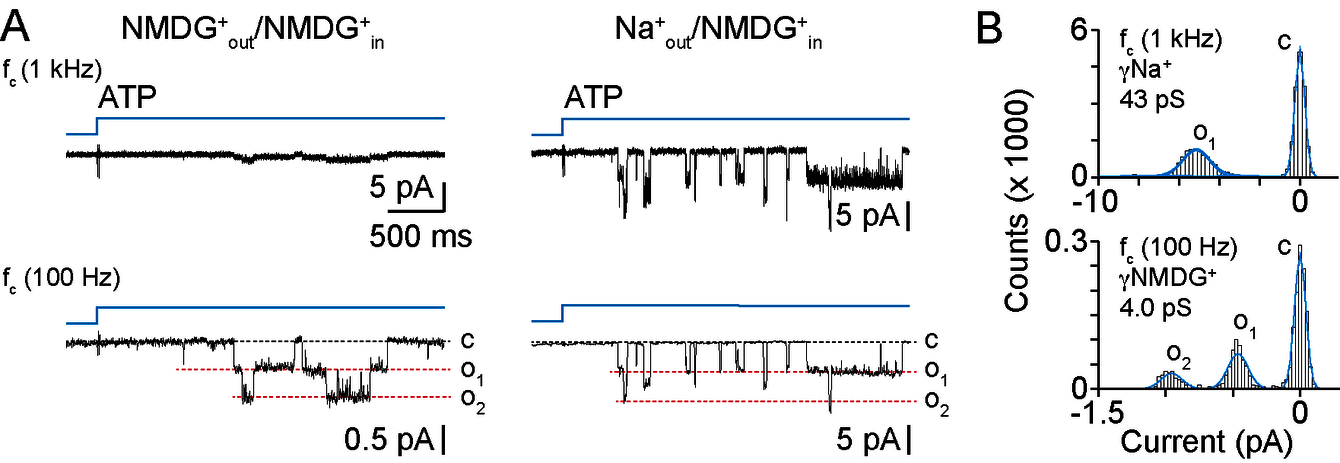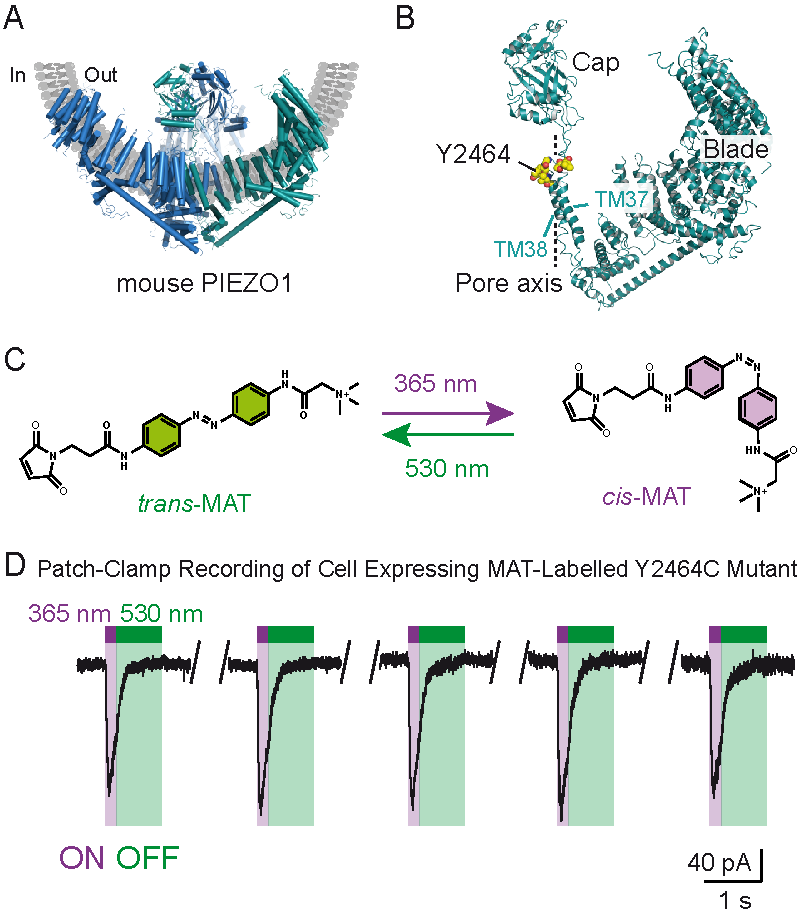Our research projects aim to continue our investigations into P2X receptors and PIEZO ion channels.
ATP-gated P2X Receptors
Our recent work on ATP-gated P2X receptors has contributed to understanding the molecular mechanisms of permeation of large cations, such as the synthetic molecule N-methyl-D-glucamine (NMDG+), through the pore. By combining single-channel recordings and the use of optotweezers, we show that NMDG+ permeation occurs in an open state similar to that permeable to Na+ ions. This open state has a sufficiently large opening to allow the passage of NMDG+ ions, but the rates at which these large cations percolate the pore are roughly 10 times slower than those of Na+ ions (Harkat et al., PNAS 2017). These findings partially explain the mechanism of macropore formation, which remains a unique feature of P2X receptors.
Our current project aims to fully understand the macropore formation mechanism, particularly in P2X7 receptors, by testing several hypotheses, including those involving the contribution of the TMEM16F protein (Dunning et al., Int J Mol Sci 2021).
PIEZO Channels
We have recently developed the first chemical optogenetic tools targeting PIEZO1 channels (Peralta et al., Nat Commun 2023). This work opens new perspectives on the biophysical aspects of mechanobiology, particularly on the sense of touch and its dysfunction in mechanical allodynia.
Our projects involve studying the molecular and biophysical aspects of PIEZO channels using molecular and photochemical approaches developed within the laboratory.


